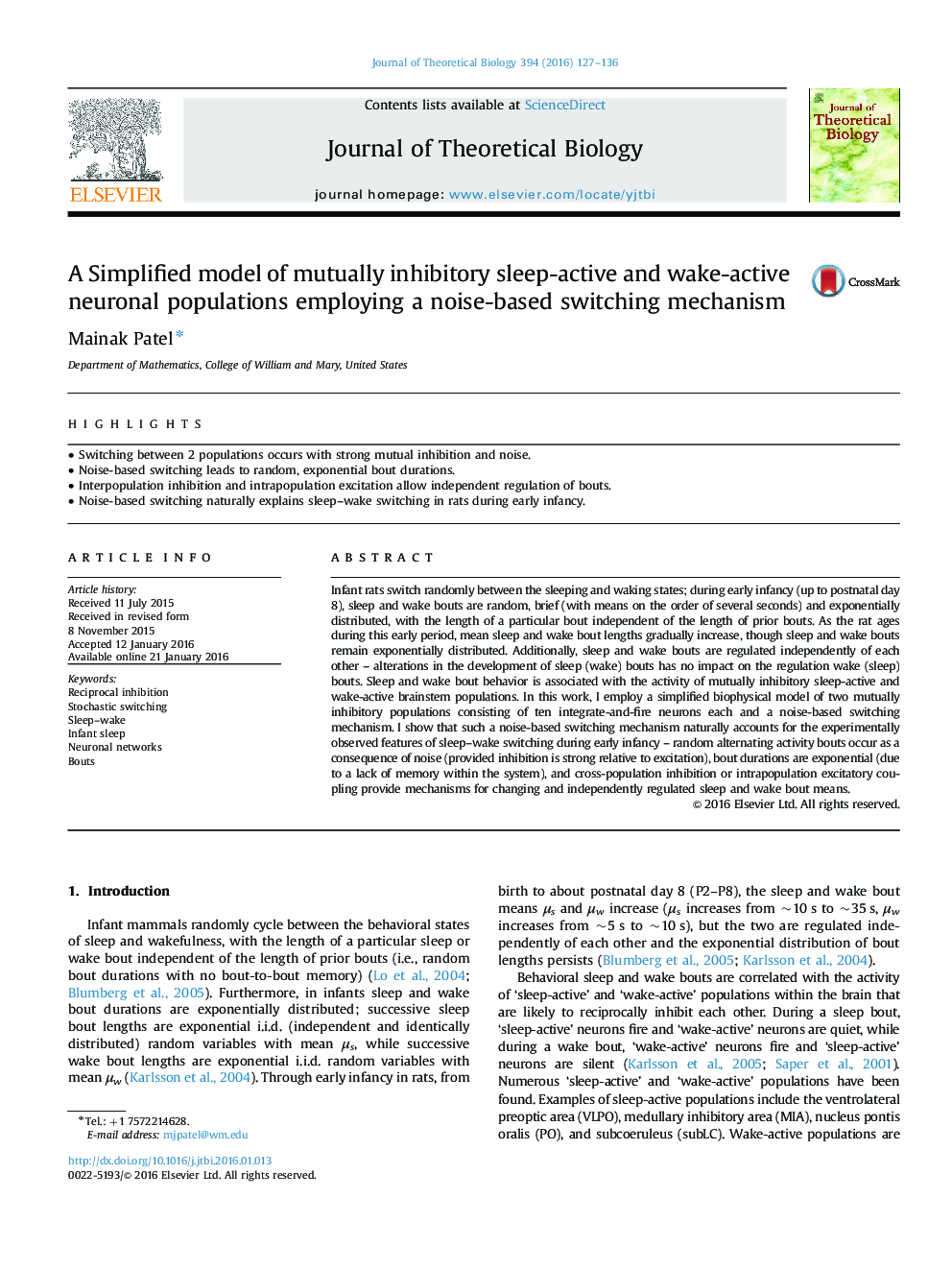| Article ID | Journal | Published Year | Pages | File Type |
|---|---|---|---|---|
| 4495891 | Journal of Theoretical Biology | 2016 | 10 Pages |
•Switching between 2 populations occurs with strong mutual inhibition and noise.•Noise-based switching leads to random, exponential bout durations.•Interpopulation inhibition and intrapopulation excitation allow independent regulation of bouts.•Noise-based switching naturally explains sleep–wake switching in rats during early infancy.
Infant rats switch randomly between the sleeping and waking states; during early infancy (up to postnatal day 8), sleep and wake bouts are random, brief (with means on the order of several seconds) and exponentially distributed, with the length of a particular bout independent of the length of prior bouts. As the rat ages during this early period, mean sleep and wake bout lengths gradually increase, though sleep and wake bouts remain exponentially distributed. Additionally, sleep and wake bouts are regulated independently of each other – alterations in the development of sleep (wake) bouts has no impact on the regulation wake (sleep) bouts. Sleep and wake bout behavior is associated with the activity of mutually inhibitory sleep-active and wake-active brainstem populations. In this work, I employ a simplified biophysical model of two mutually inhibitory populations consisting of ten integrate-and-fire neurons each and a noise-based switching mechanism. I show that such a noise-based switching mechanism naturally accounts for the experimentally observed features of sleep–wake switching during early infancy – random alternating activity bouts occur as a consequence of noise (provided inhibition is strong relative to excitation), bout durations are exponential (due to a lack of memory within the system), and cross-population inhibition or intrapopulation excitatory coupling provide mechanisms for changing and independently regulated sleep and wake bout means.
